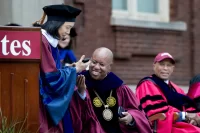
What could be better than a little cheese after a hard day of classes? What about having your class transformed into a cheese-tasting room, complete with crackers, cheese, and two guest alumni who started their own goat dairy and cheese-making business?
Students got to have their cheese and eat it, too, in the course “Living in a Microbial World,” taught by Lori Banks, assistant professor of biology.
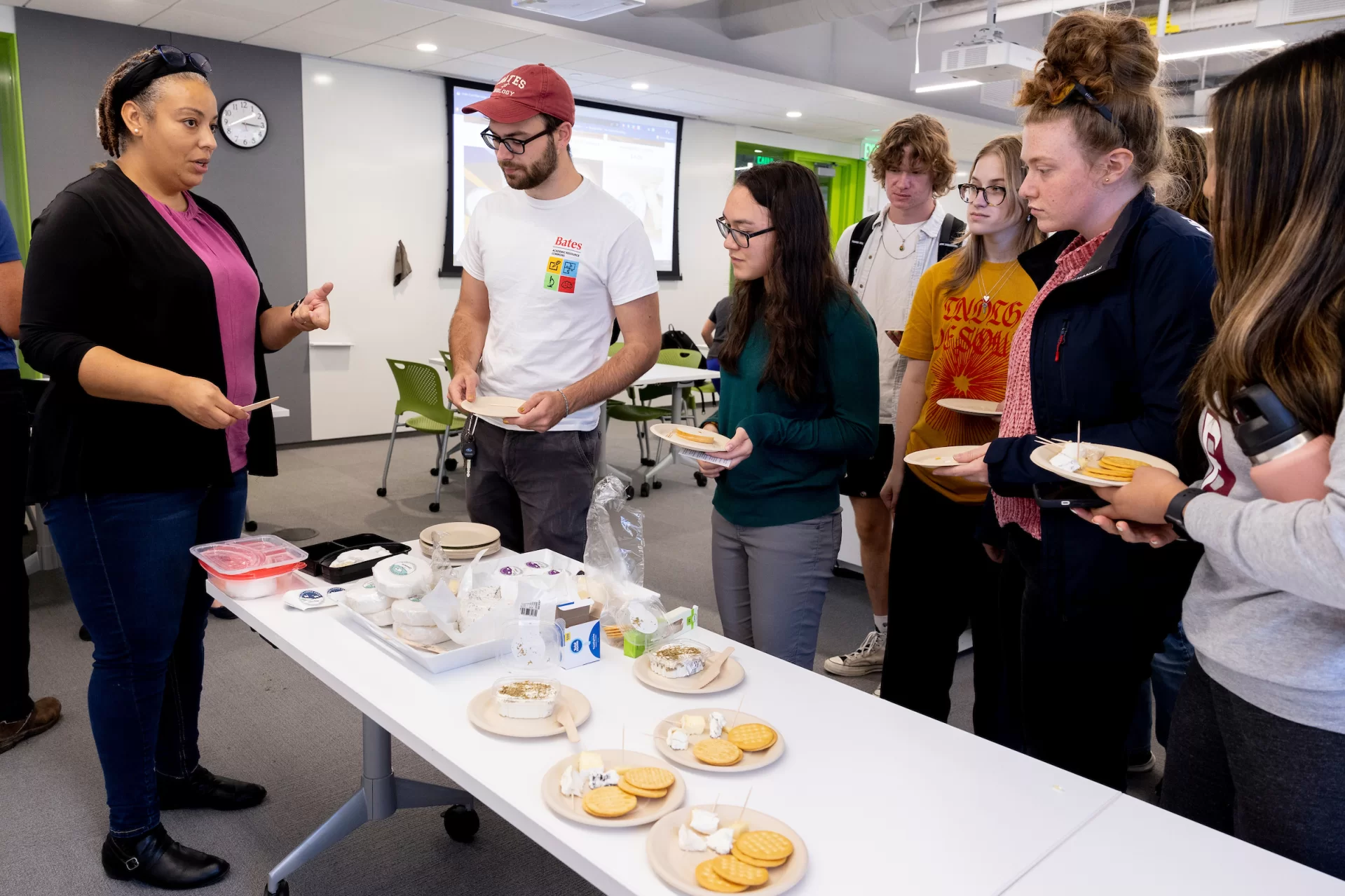
The course is one of the biology department’s several innovative courses known as CUREs. These courses offer “course-based undergraduate research experiences” to students early in their STEM education.
This fall, students in Banks’ CURE course, Biology 195D, have been exploring the microbial world by looking at two different cheeses made by Banks and two colleagues involved in the course, Beth Malachowsky, a research technician, and Amy McDonough, an assistant in instruction.
“Anything involving food and microbes, we’re interested in,” says Malichowsky with a laugh. After taking a course from the Vermont Cheese Council, Banks got the the idea of doing the course.
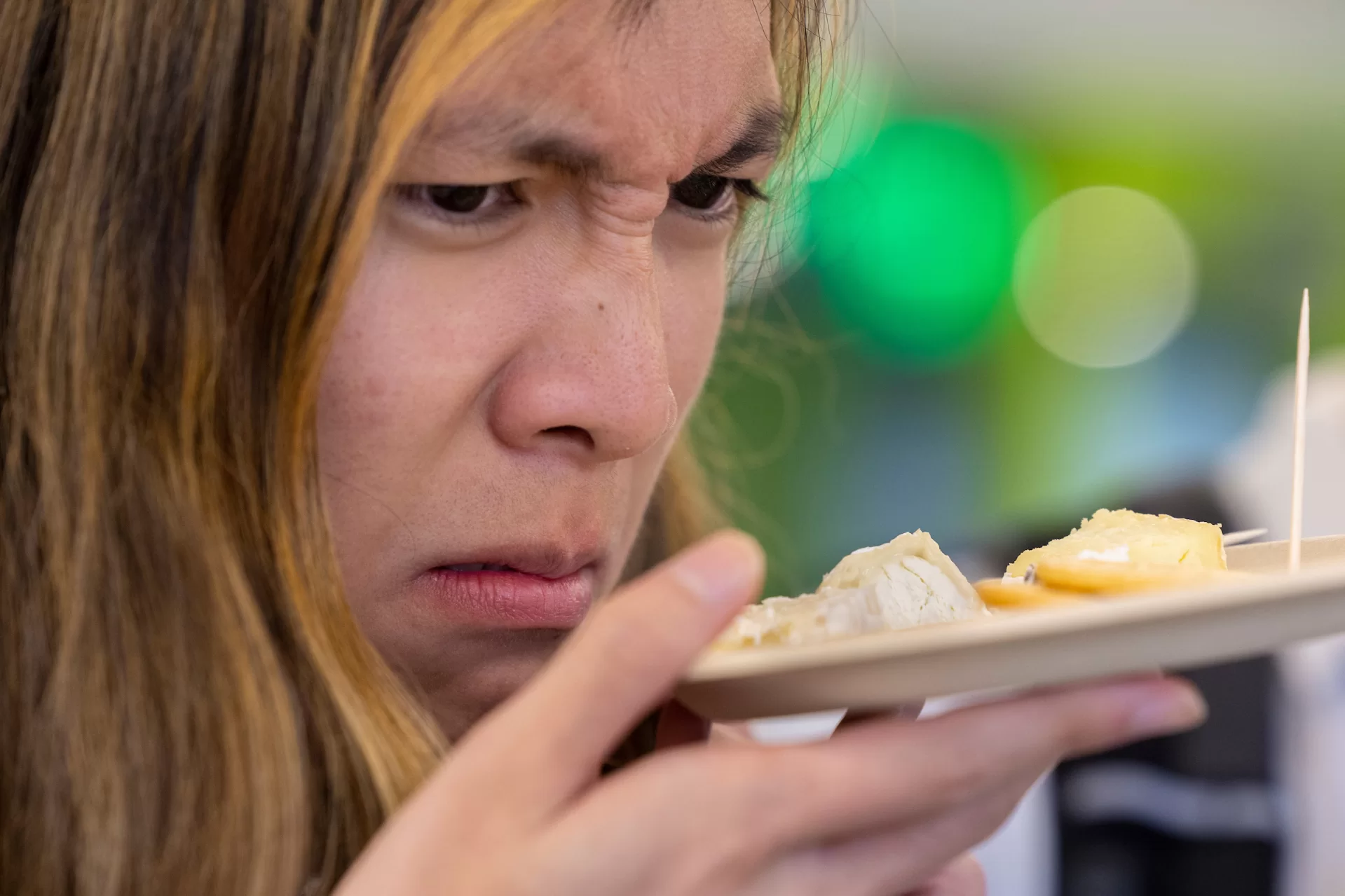
The trio spent about a week making two different batches of cheese for students to taste and examine throughout the course. The students are trying to reverse-engineer the cheesemaking process using microscopy and molecular biology techniques.
“Reverse engineering” means that it’s the students’ job to figure out how Banks’ team made the cheeses.
Along the way, Banks wants the students to “know and understand what are some things that we change about the fungal species” (fungus being a starter culture for some blue-veined cheeses) “if we want to program in a difference, or design a cheese, they can start to make some observations and then produce a hypothesis at the end of what was different about these two cheeses.”
To lend a helping hand, two alumni recently visited Banks’ classroom in Bonney to talk with students about cheese, life after college, and how a postgrad path can take the most unexpected turns.
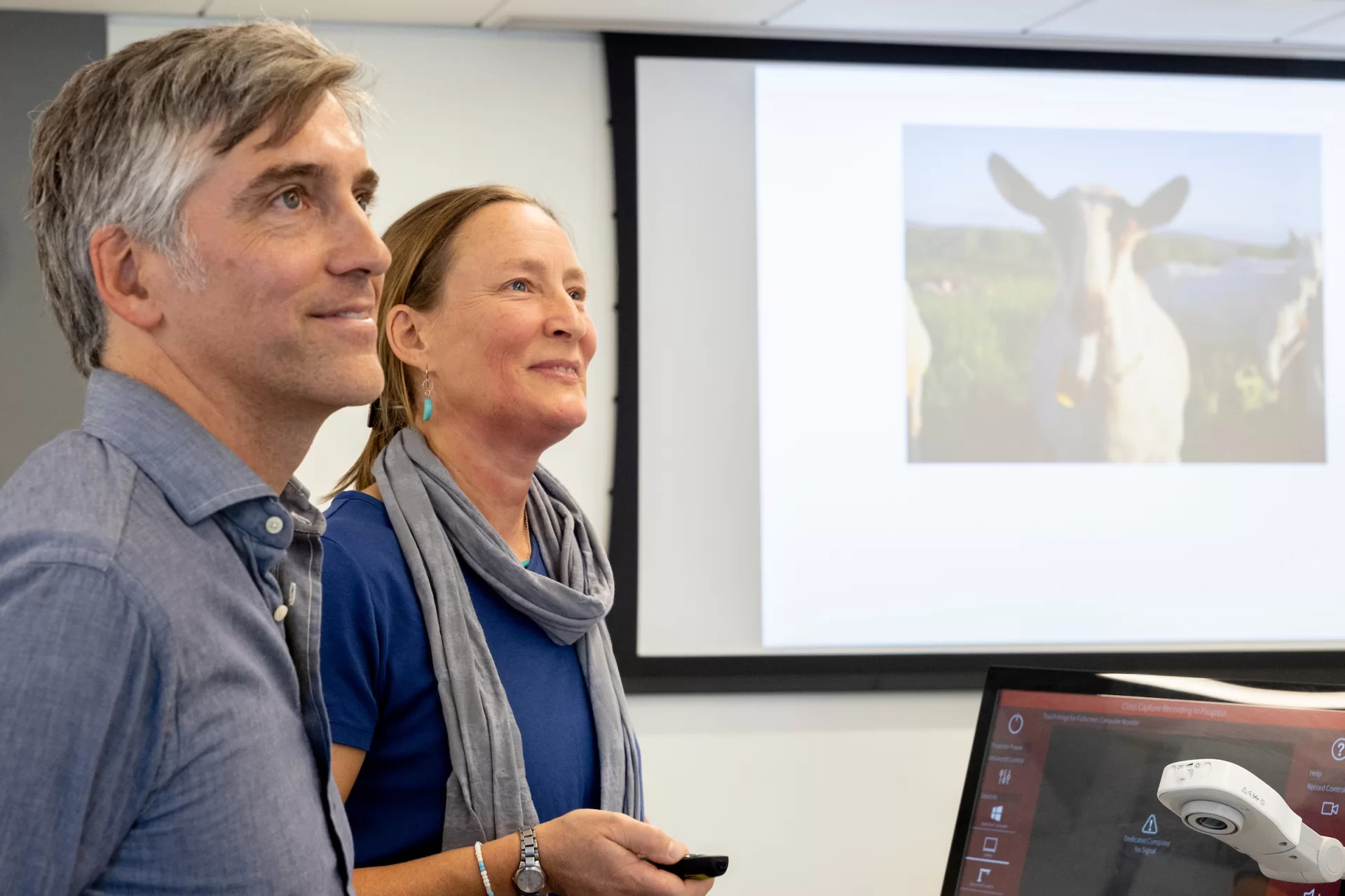
Hannah Sessions ’99 and Greg Bernhardt ’99 met at Bates; both were studying art; Sessions was an interdisciplinary major in studio art, women’s studies, and political science, and Bernhardt was a double major in art and English.
One of the last classes they took, an introductory course titled “Plants and Human Affairs,” turned their humanities gaze toward science.
The course explored economic botany, how humans use plants for food and other basic necessities, and ethnobotany, which examines the relationship between those uses and the cultural practices and traditions they inhabit. “That class was like our life,” said Bernhardt. “It was like science for English majors.”
A year after graduating, they moved to Vermont and began a life that knits the two together. They transformed an old dairy farm into what is now Blue Ledge Farm, a goat dairy and cheesemaking operation. That produces anything from plain chèvre, to a camembert-brie hybrid, to cheeses with touches of peppers, maple, and orange.
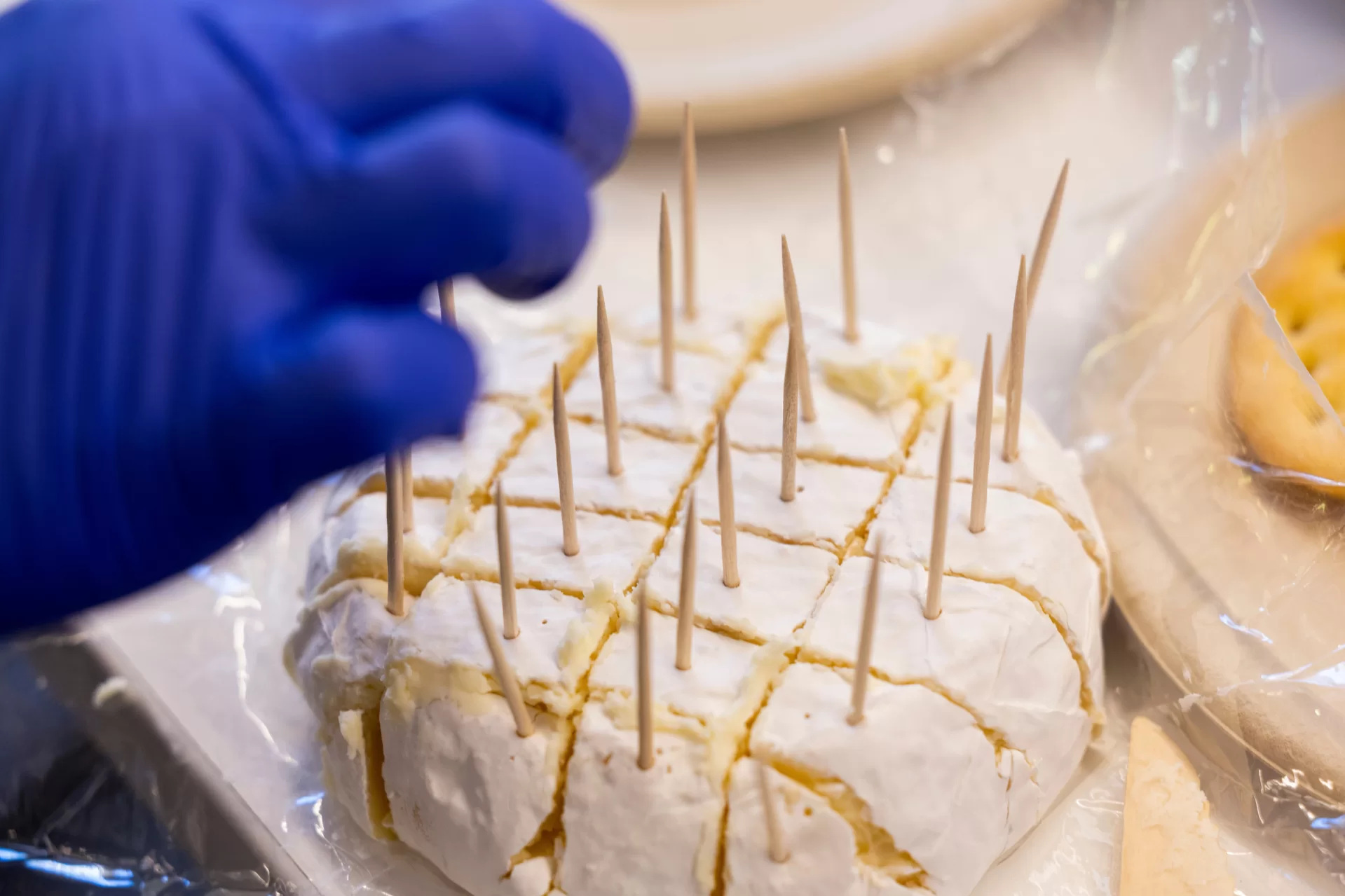
At the same time, Sessions and Bernhardt pursued their artistic endeavors, oil painting and writing. Beyond designing the unique (and varied!) logos for their different cheeses, their art can be found adorning galleries with oil paintings of goats, cows, chickens, and of course, cheese.
Banks’ students were more than happy to sit and munch on cheese from Banks’ batches and from Blue Ledge Farm, while listening to Sessions and Bernhardt talk about their farm, and the path that led to their way of life. But, the pair had some hard-won advice to share as well, for students interested in cheesemaking, or not.
For example, springtime brings a surplus of milk from their cow milk supplier, so much milk that it’s hard to process and sell in time. The solution: make more hard cheeses, which have a longer shelf life than high-moisture cheeses. “Hard cheese is like money in the bank,” advised Sessions. It’s not hyperbole, either: Italy has a literal bank of cheese, where hundreds of thousands of wheels of aging Parmigiano-Reggiano sit as surety for farm capital, growing more valuable while waiting through the stormy fluctuations of the parmesan market.
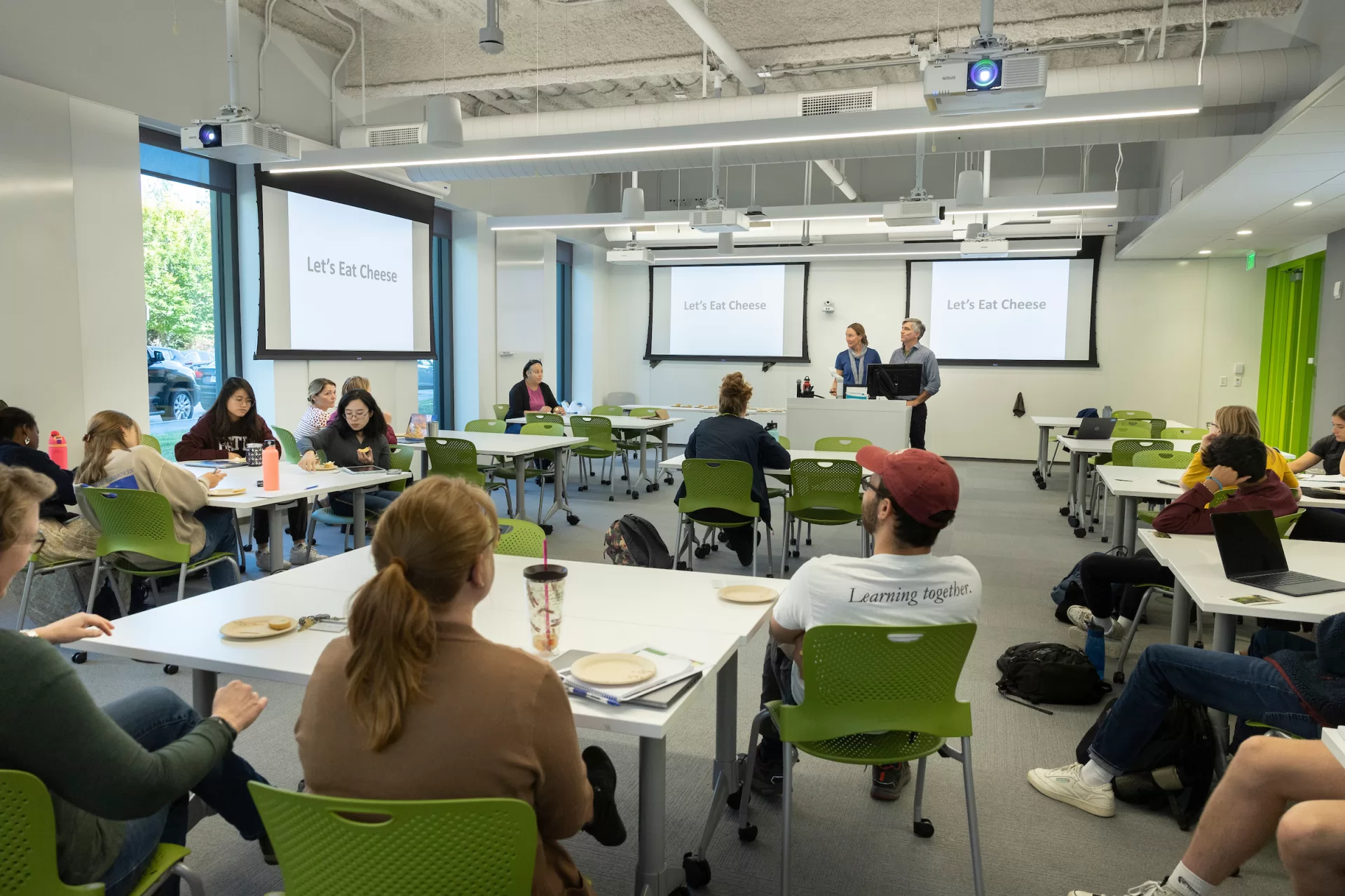
Agriculture, like any other business, has layers of complexity and is hard to predict, said Sessions. The correct path forward is never obvious, and even the best-laid plans can turn out to be as full of holes as a good slice of Swiss. But “you just have to keep an open mind and do your best,” she said.
In the end, said Bernhardt, offering a piece of advice that fits whether one chooses farming or finance, “you have to make something you love,” said Bernhardt. “It’s sort of like writing a paper for a professor; if you don’t love it, they won’t either.”

